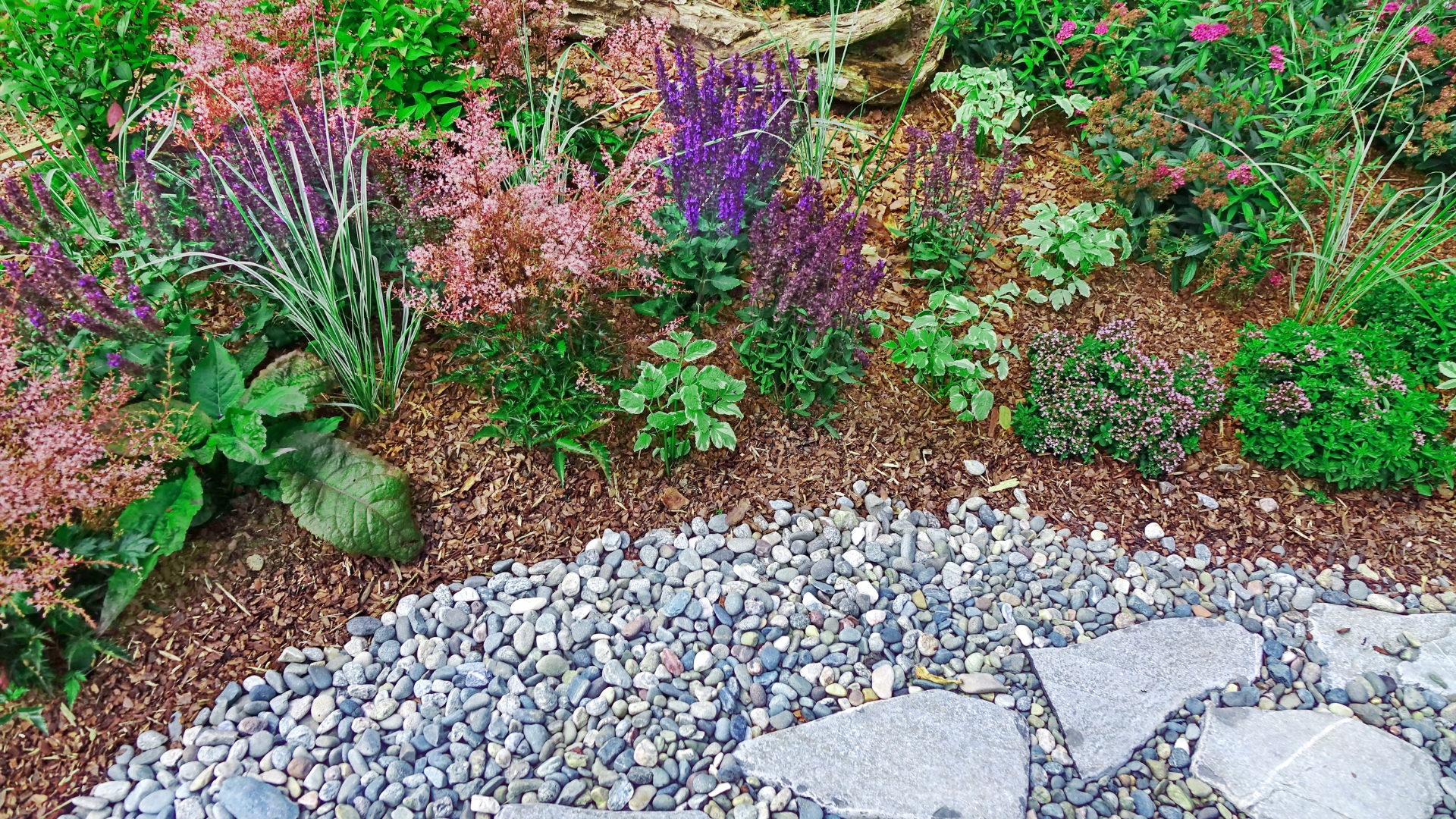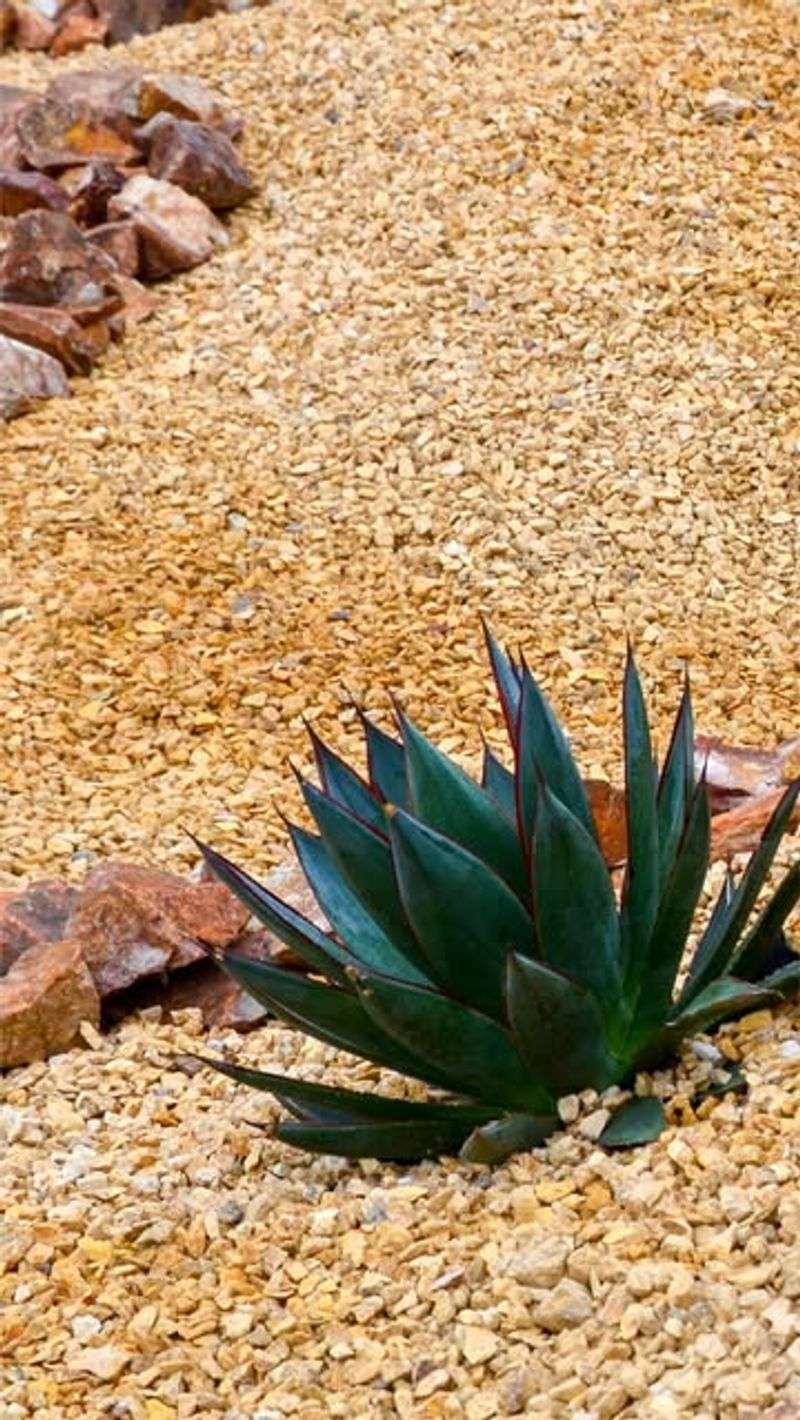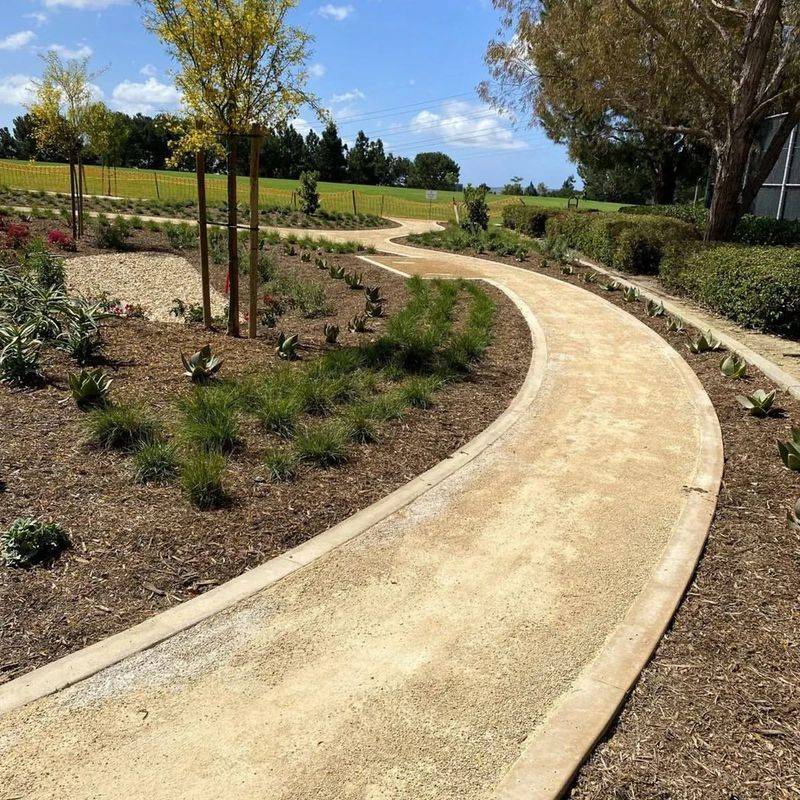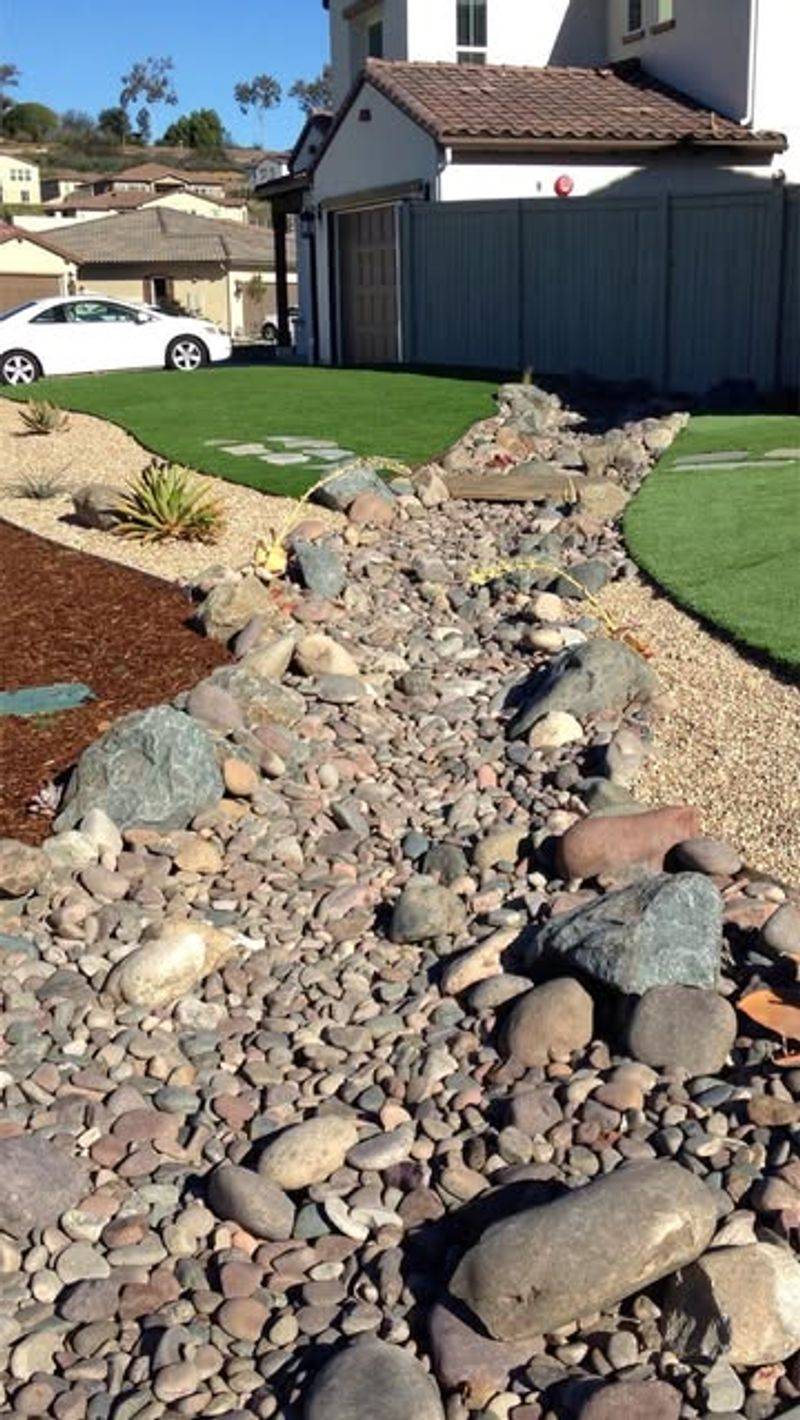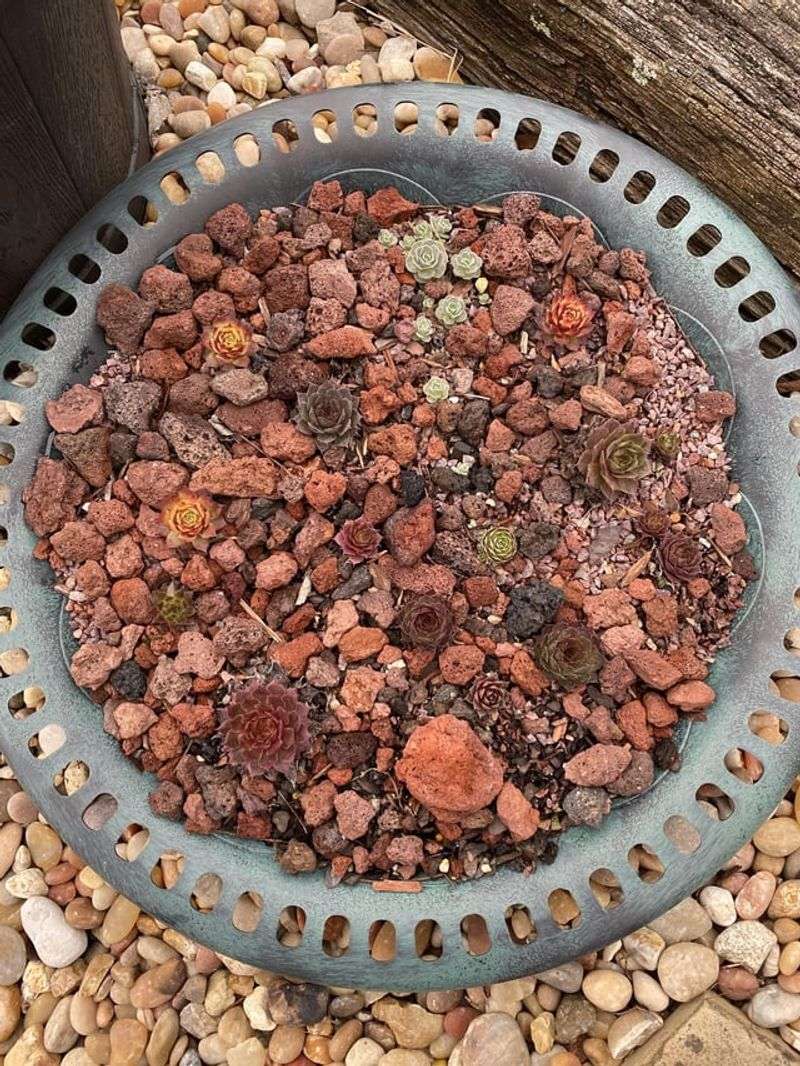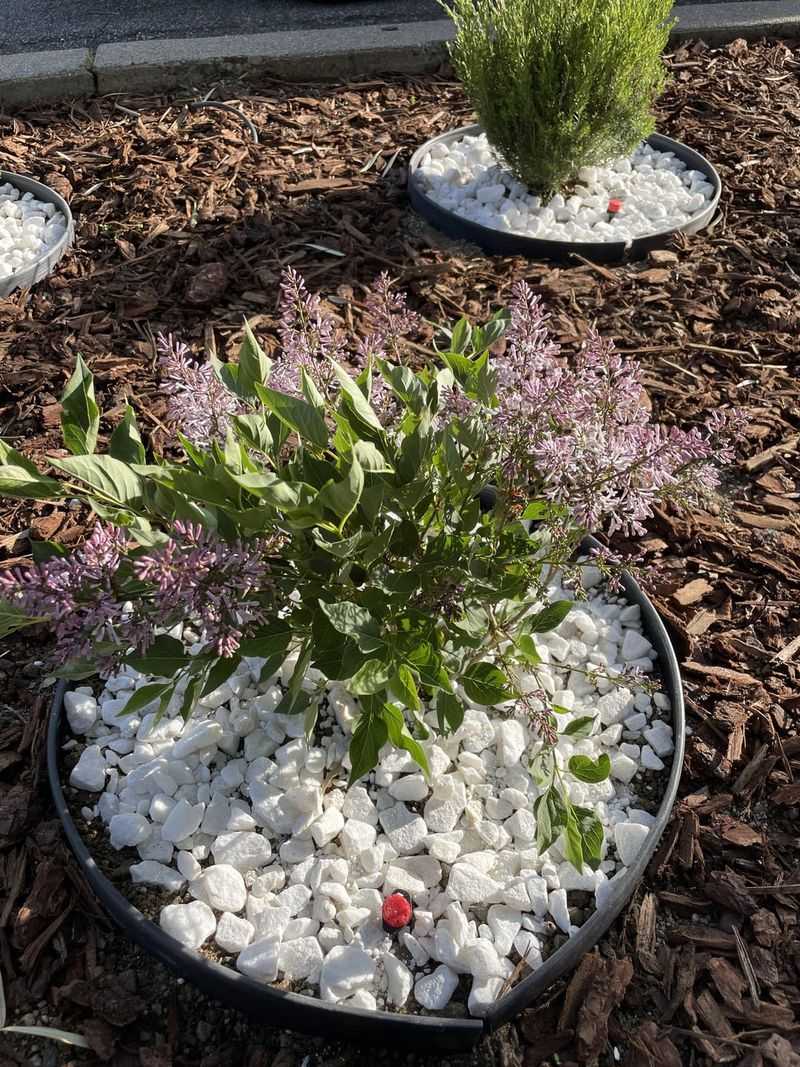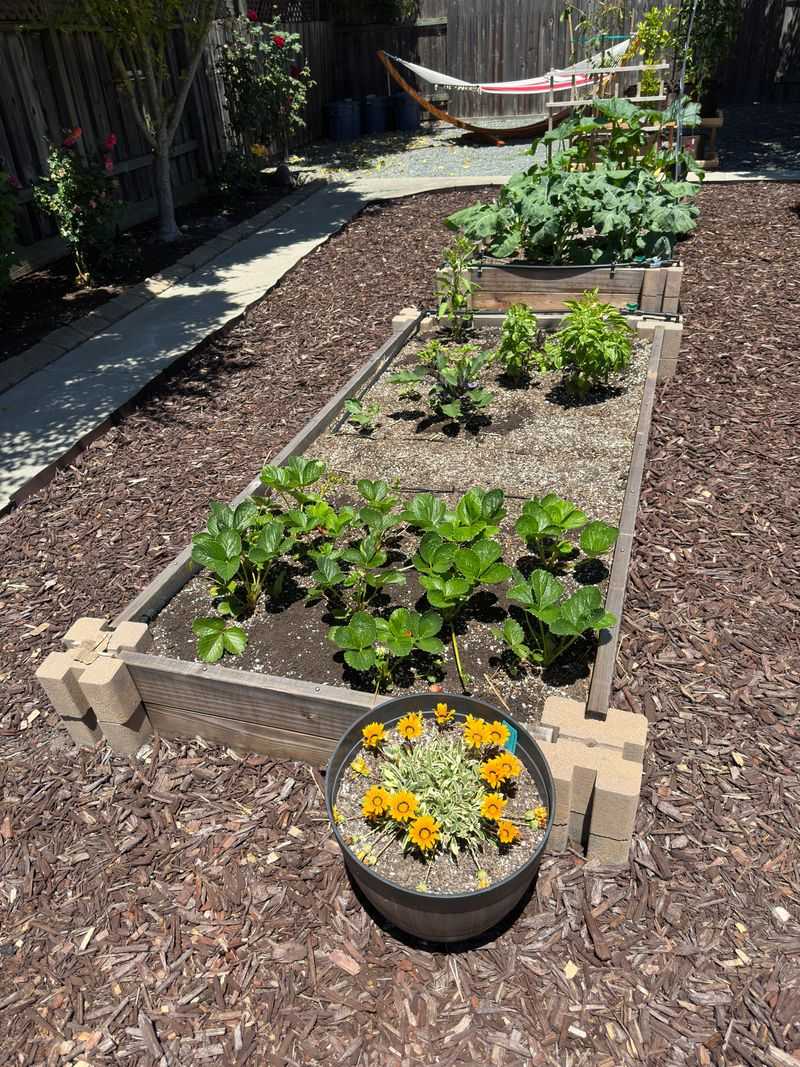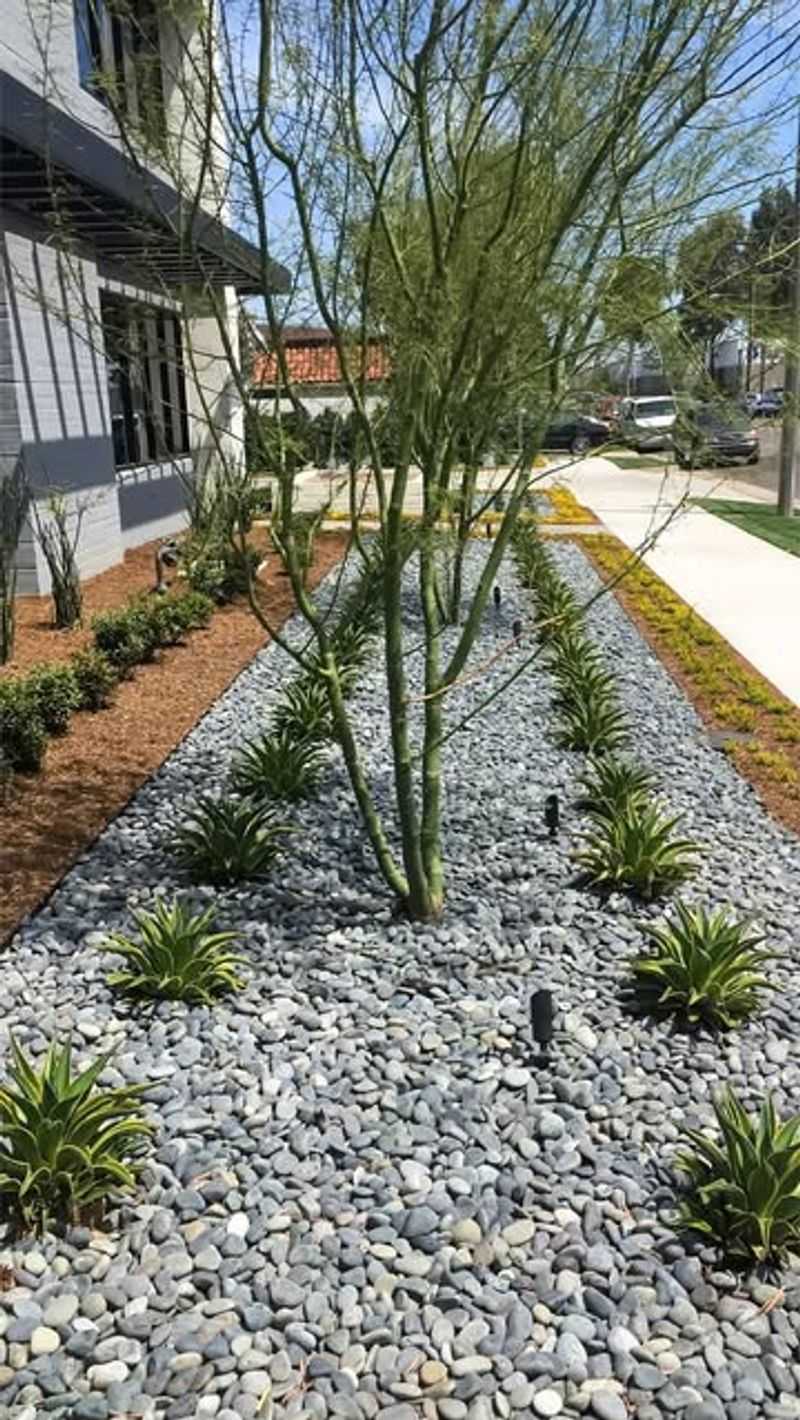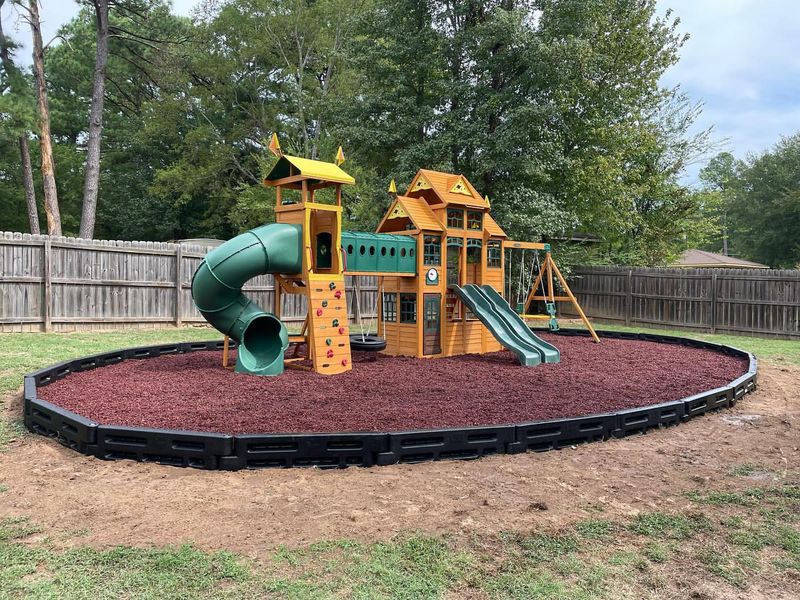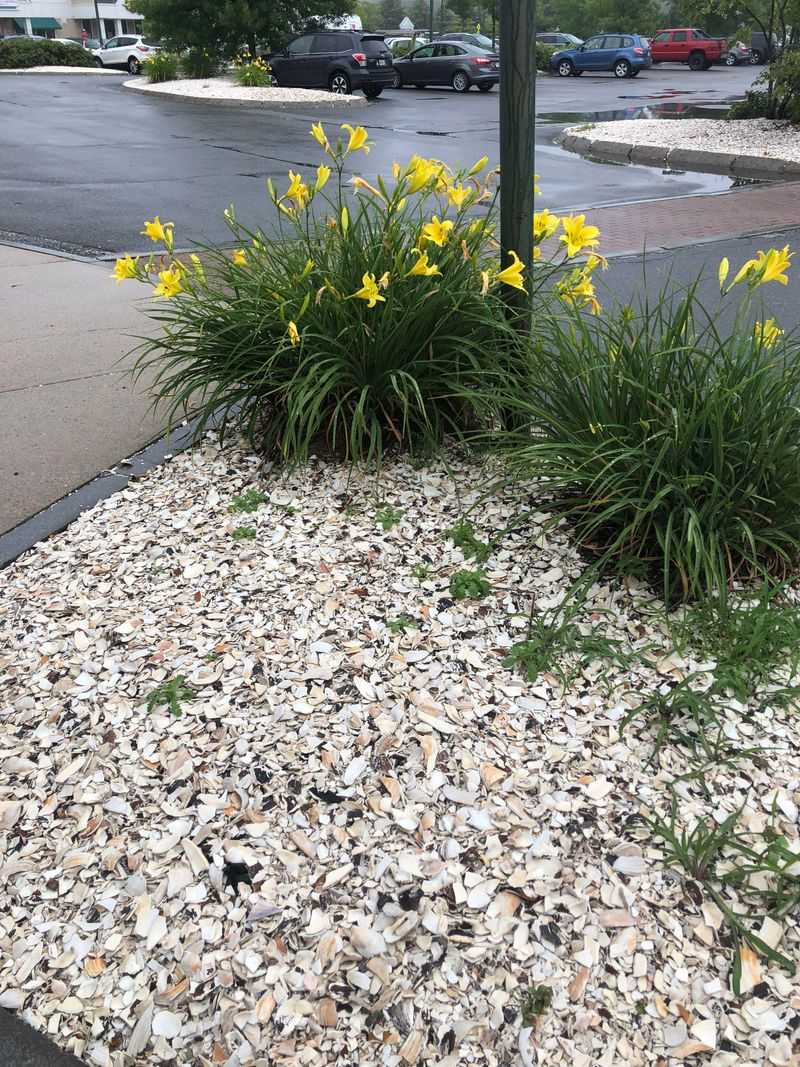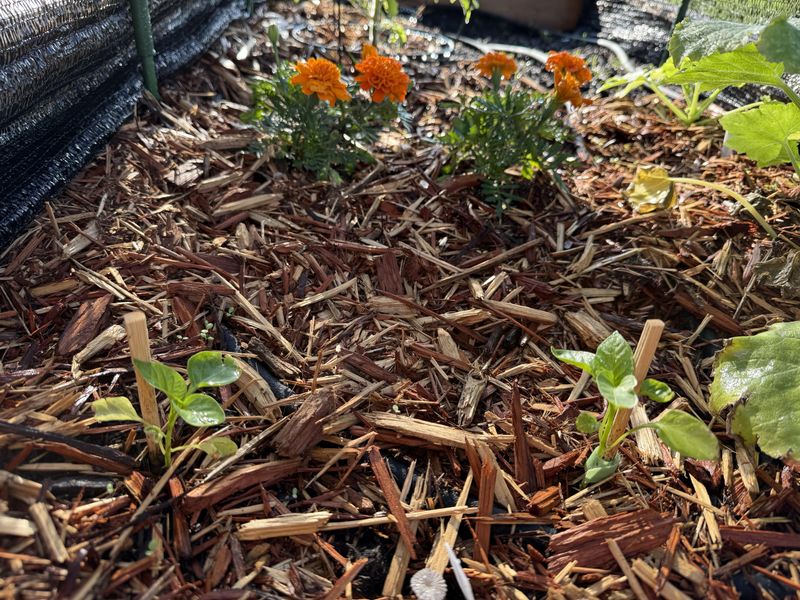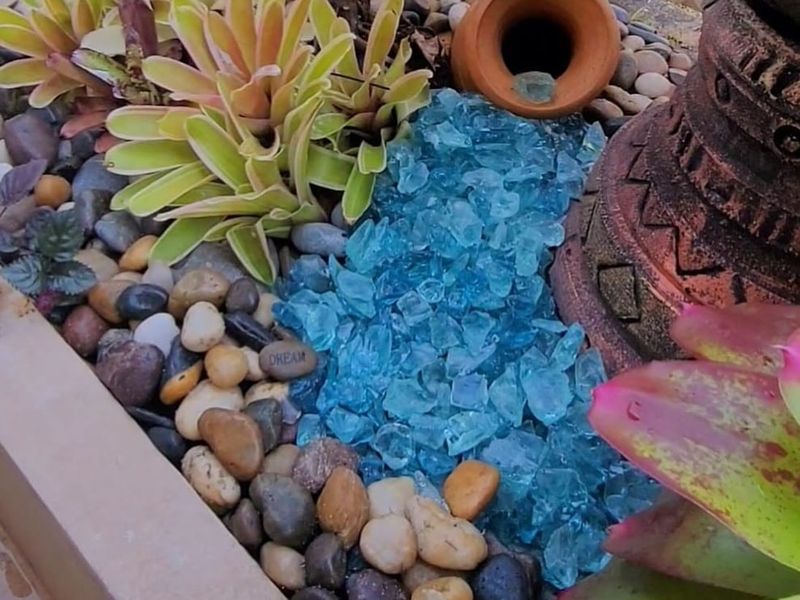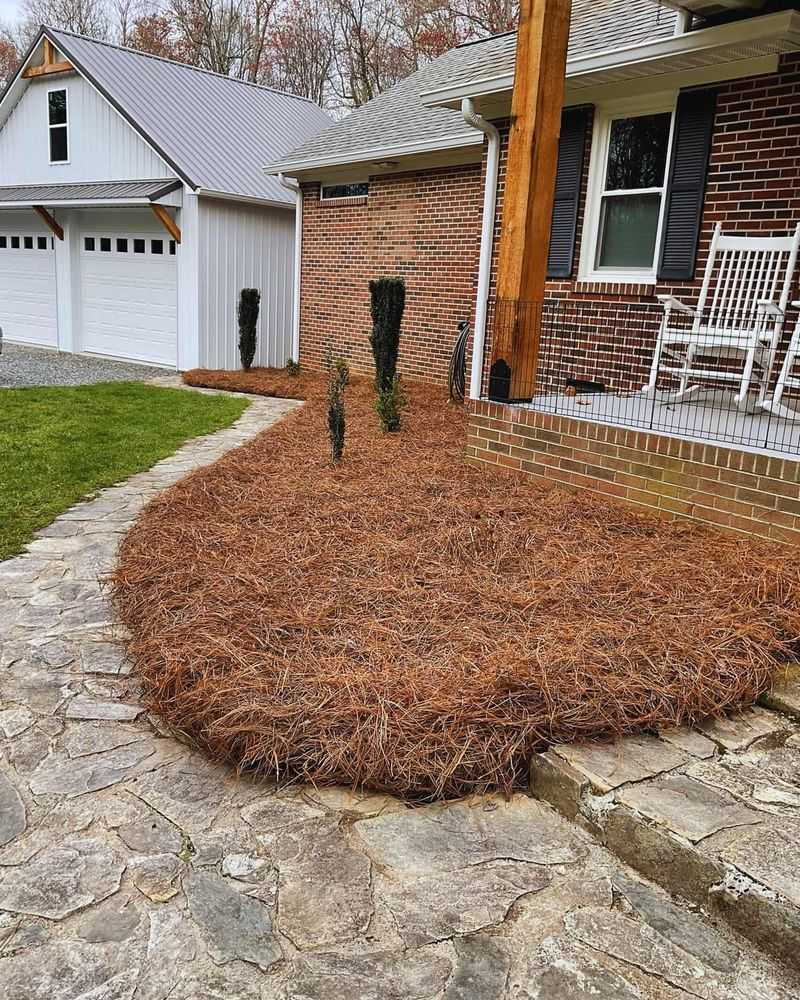In Arizona’s dry heat, using rocks and mulch isn’t just about looks—it’s about making every drop of water count. Combining the right stones with smart mulch choices helps keep soil cool and plants happy under the blazing sun.
I’ve seen gardens transform with just a few simple swaps that hold moisture and cut down on maintenance. It’s a clever way to protect your plants and add some serious style.
When water is precious, these rock and mulch ideas bring both function and flair to the desert garden.
1. Desert Gold Gravel
Golden-hued gravel brings warmth to Arizona landscapes while reflecting heat away from plants. The small, rounded stones create excellent drainage in areas where monsoon rains can cause flooding.
Many homeowners across Arizona prefer this option for pathways because it stays put better than lighter materials when those famous desert winds kick up.
2. Decomposed Granite
This rusty-red material crushes into fine particles that lock together when wet, creating firm surfaces perfect for pathways. Unlike concrete, decomposed granite allows water to seep through to plant roots below.
Throughout Arizona’s Sonoran regions, landscapers love how this material complements native cacti and creates a natural desert feel without looking artificial.
3. River Rock Borders
Smooth, polished stones collected from riverbeds create stunning garden borders that define planting areas. The varied colors bring natural beauty while preventing soil erosion during Arizona’s unpredictable flash floods.
Even in Phoenix’s hottest neighborhoods, river rocks maintain their appearance without fading or breaking down under intense UV exposure.
4. Shredded Cedar Mulch
Cedar mulch breaks down slowly in Arizona’s dry climate, making it last longer than other organic options. The pleasant aroma naturally repels insects while adding a rich contrast against desert plants.
Gardeners in Tucson have found that cedar mulch helps soil retain moisture during drought periods, reducing watering needs by up to 30% compared to bare soil.
5. Crushed Lava Rock
Volcanic lava rock’s porous nature makes it perfect for Arizona gardens. The small air pockets trap moisture and slowly release it to plant roots, extending time between waterings.
Residents in Scottsdale appreciate how the deep red color doesn’t fade under intense sunlight and creates dramatic contrast against silver-leafed desert plants.
6. Marble Chips
Bright white marble chips reflect sunlight and heat, keeping soil temperatures lower in Arizona’s brutal summers. This cooling effect protects delicate plant roots from cooking in the ground during 100+ degree days.
Homeowners in Mesa love using marble chips around swimming pools where their clean appearance complements modern desert architecture.
7. Mesquite Mulch
Made from local mesquite trees, this mulch adapts perfectly to Arizona’s climate since it comes from plants already thriving there. The rich, dark color creates beautiful contrast against desert plants and sandy soils.
Gardeners throughout Flagstaff value how this native material breaks down gradually, adding organic matter to typically nutrient-poor desert soils.
8. Mexican Beach Pebbles
Smooth, black pebbles create striking visual impact against Arizona’s typically pale landscape. Their dark color absorbs heat during the day and releases it at night, creating microclimate benefits for nearby plants.
Landscapers in Sedona often use these elegant stones in dry creek beds that channel rainwater during monsoon season while looking beautiful year-round.
9. Rubber Mulch
Made from recycled tires, rubber mulch withstands Arizona’s extreme temperature fluctuations without breaking down. Unlike organic options, it won’t blow away in desert winds or need annual replacement.
Parents in Tempe particularly favor this option for playground areas since it provides cushioning for falls while standing up to the state’s intense sun exposure.
10. Flagstone Pathways
Natural stone slabs create stunning walkways that withstand Arizona’s harsh climate for decades. The varied earthy tones complement desert landscapes while providing stable footing even during monsoon downpours.
Homeowners in Prescott often leave small gaps between stones and fill with drought-tolerant groundcovers, creating living pathways that blend harmoniously with the natural environment.
11. Crushed Seashells
Bringing coastal vibes to the desert, crushed seashells add unique texture and light-reflecting properties. They gradually break down, releasing calcium that benefits alkaline-loving desert plants.
Garden designers in Yuma use shell mulch in meditation gardens where the soft crunching sound underfoot adds sensory experience to Arizona landscapes.
12. Pecan Shell Mulch
Byproducts from Arizona’s pecan farms make excellent mulch that supports local agriculture. The shells break down slowly, improving soil structure while their rich brown color creates visual warmth.
Gardeners near Chandler appreciate how this renewable resource doesn’t need to be shipped from far away, reducing the carbon footprint of their landscape designs.
13. Glass Mulch
Recycled glass tumbled to remove sharp edges creates sparkling mulch that catches Arizona’s abundant sunlight. Available in multiple colors, it adds artistic flair to modern desert landscapes without fading.
Residents in Glendale use blue glass mulch to create dry “water features” that suggest coolness without wasting precious water in their drought-prone state.
14. Landscape Cobbles
Larger than pebbles but smaller than boulders, cobblestones create dramatic focal points in Arizona yards. Their substantial size prevents them from washing away during summer monsoons or blowing around in spring winds.
Homeowners in Gilbert position cobbles strategically to direct rainfall toward plant roots, maximizing nature’s irrigation in a state where every drop counts.
15. Pine Needle Mulch
Fallen needles from Arizona’s northern pine forests make excellent mulch for acid-loving plants in an otherwise alkaline environment. They interlock naturally, staying in place better than many other organic options.
Gardeners in Flagstaff collect and share pine needles as a free, sustainable mulching option that connects their landscapes to the beautiful forests surrounding their high-desert community.

